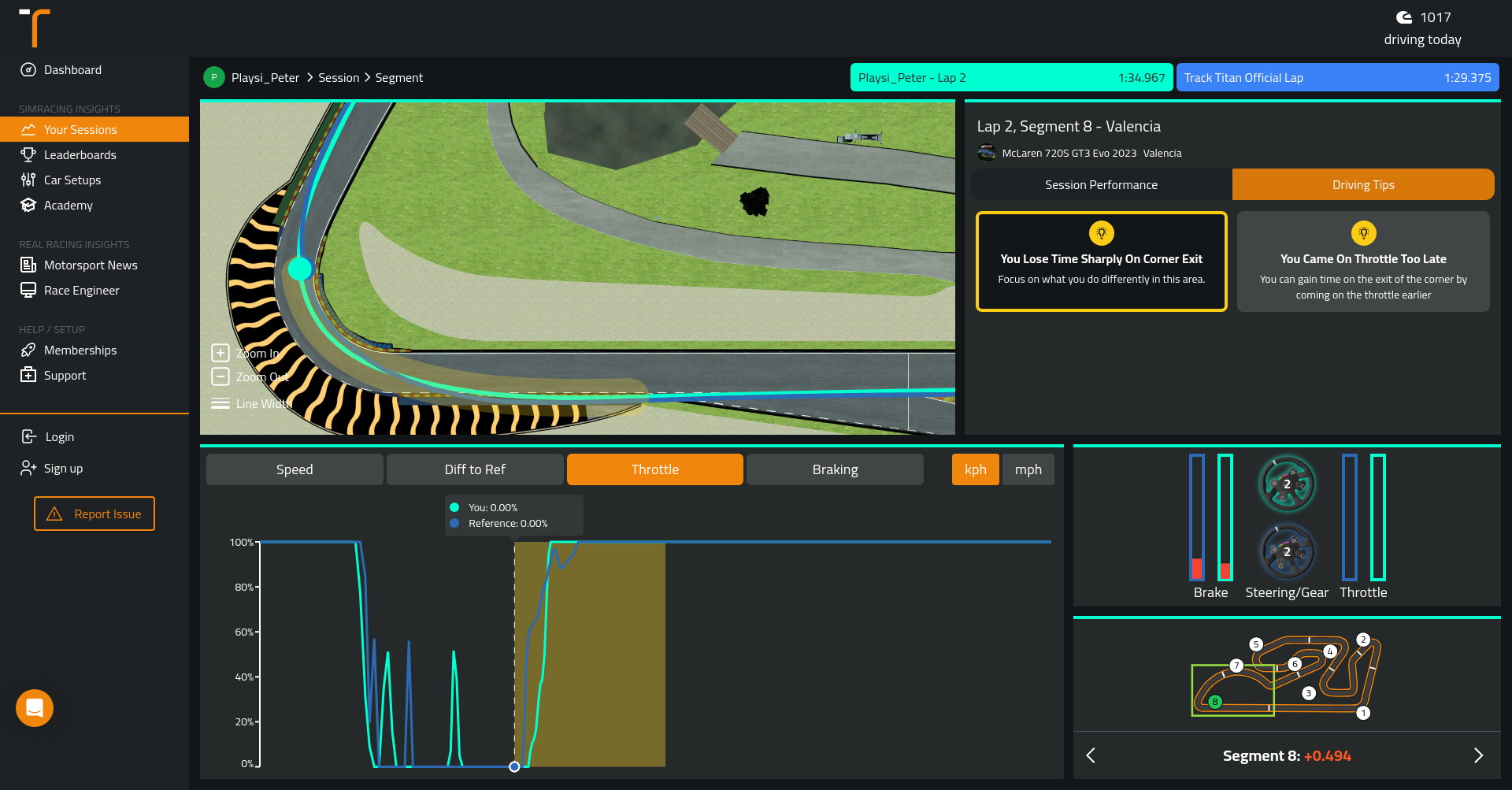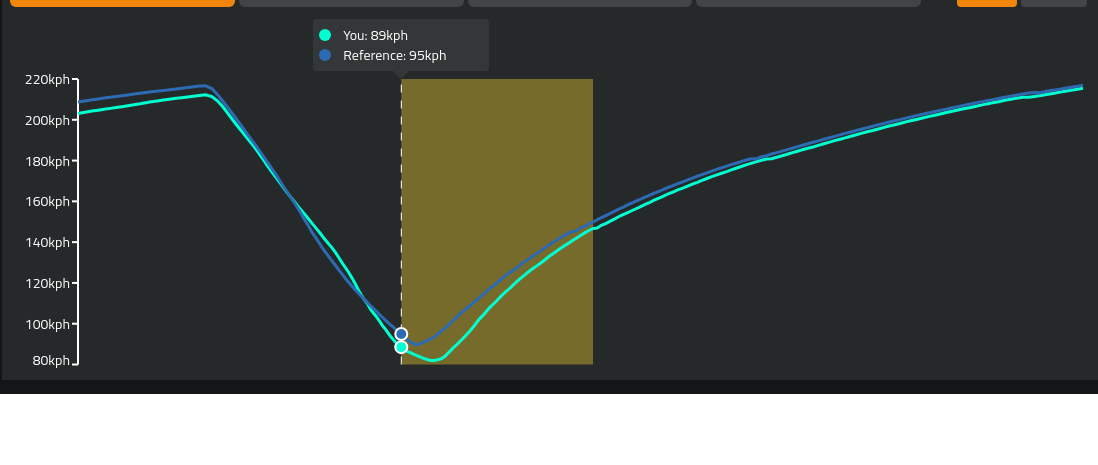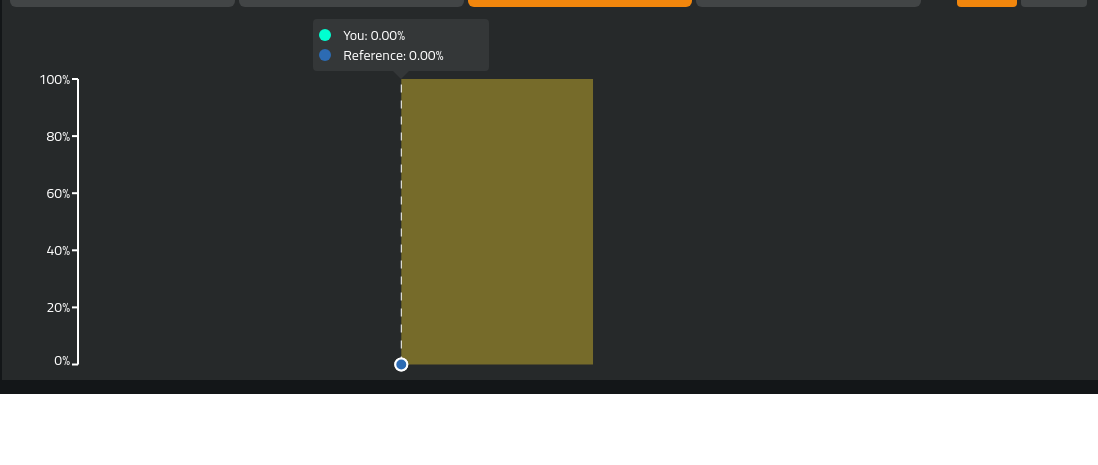Valencia Corner Analysis - McLaren 720S GT3 Evo 2023 (ACC)
February 10th, 2024

The speed chart analysis reveals that driverB enters the corner with less speed than driverA, indicating a poor exit from the previous corner. This slower entry speed puts driverB at a disadvantage throughout the corner sequence. Additionally, driverB's minimum speed is lower and occurs later compared to driverA, suggesting a delay in throttle application and resulting in time loss during corner exit. To enhance lap times, driverB should focus on earlier throttle application and maintaining higher minimum speeds. The throttle control analysis shows that driverA is hesitant in applying throttle, with a delayed and gradual increase, leading to a cautious exit from the corner. In contrast, driverB applies throttle earlier and more aggressively, allowing for greater speed through the corner exit and gaining time over driverA. The aggressive exit strategy of driverB could be advantageous for driverA to improve their own corner exit speed and reduce overall lap times.
Analyzing the speed chart, it's evident that driverB enters the corner with a lower speed compared to driverA. This suggests that driverB did not carry as much speed from the previous corner into this one. Specifically, at the very start of the chart on the left, there is a noticeable speed difference, indicating that driverB's exit speed from the preceding corner was not optimized. This initial deficit in speed sets a disadvantageous tone for the entire corner sequence. Furthermore, as we progress through the corner, driverB's minimum speed is lower than that of driverA and occurs later in time. This delay in reaching minimum speed points to a later throttle application by driverB, which correlates with a loss of time on corner exit. The subsequent acceleration phase for driverB is less steep compared to driverA's, confirming that valuable time is being lost due to coming on throttle too late. To improve lap times, focusing on earlier throttle application and maintaining higher minimum speeds will be crucial for driverB.

In the provided throttle control analysis, there is a clear discrepancy between the throttle application of driverA and driverB. DriverA exhibits a delayed and gradual increase in throttle application, indicating a later and more cautious approach to powering out of the corner. This hesitation is evident as driverA's line on the graph begins to ascend significantly later than that of driverB. Conversely, driverB applies the throttle much earlier and with greater confidence, as shown by the steeper incline in their graph line. This early application allows driverB to carry more speed through the corner exit, translating into a time advantage over driverA. The intensity and timing of driverB's throttle input suggest a more aggressive exit strategy, which could be beneficial for driverA to adopt in order to improve their corner exit speed and overall lap time.
